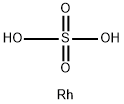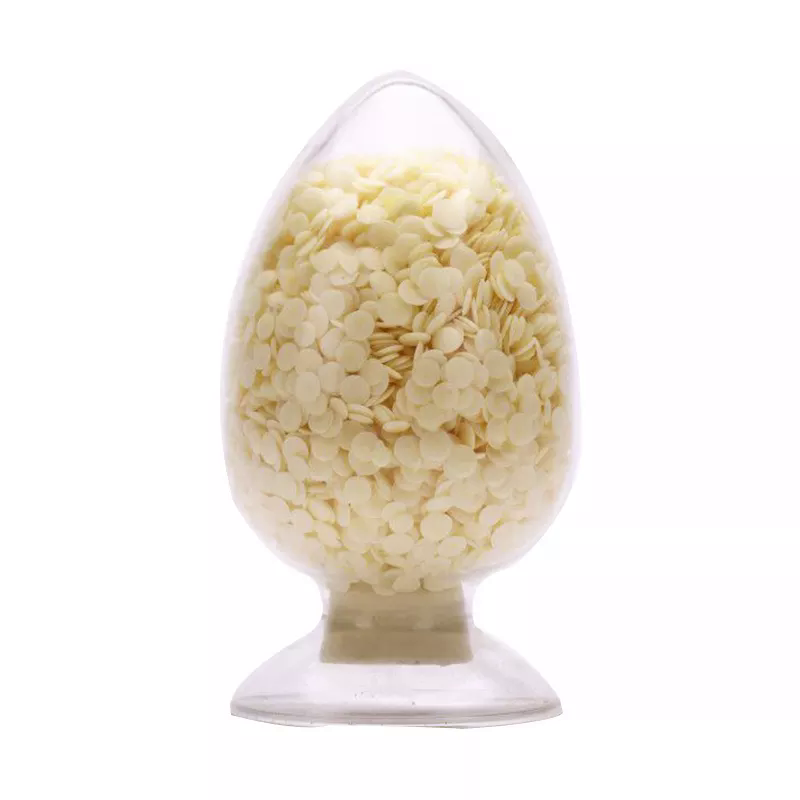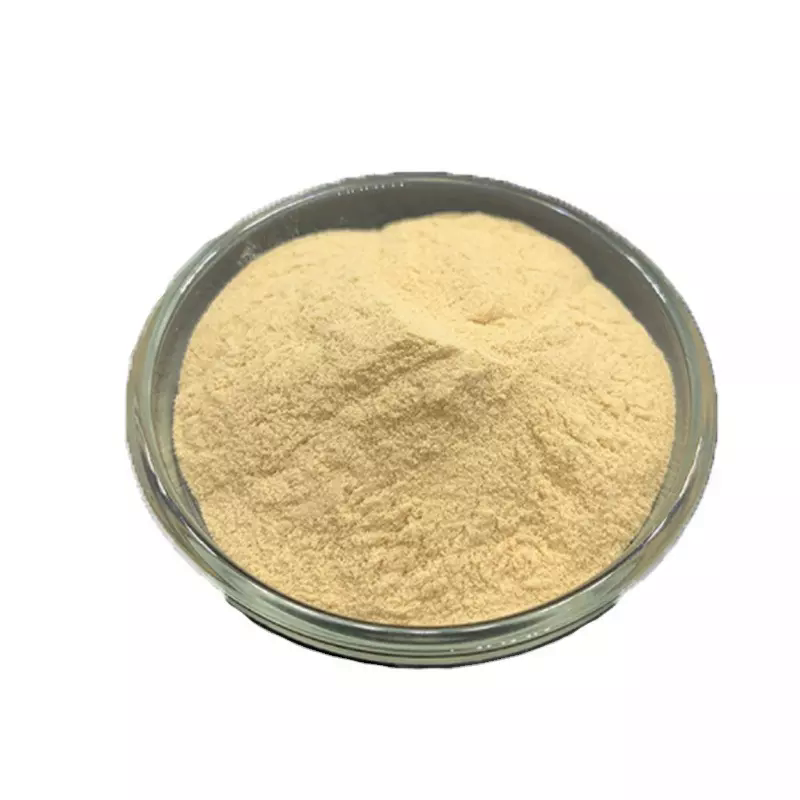Rhodium(III) sulfate
- CAS NO.:10489-46-0
- Empirical Formula: H2O4RhS
- Molecular Weight: 200.98
- MDL number: MFCD00016309
- EINECS: 234-014-5
- SAFETY DATA SHEET (SDS)
- Update Date: 2024-12-18 14:15:32

What is Rhodium(III) sulfate?
Description
When heated to decomposition, this product can emit acid mists and toxic gases (including oxides of sulphur and rhodium compounds). This product is not compatible with bases, halides, water, cyclopentadiene, cyclopentanone, oxime, nitroaryl amines, haxalithium disilicide, phosphorus (III) oxide, chlorine bromine pentafluoride, trifluoride, and oxygen difluoride (OF2). Avoid contact with metals. This product can react with water to generate heat.
Chemical properties
reddish yellow solid; ~8% aqueous solution [ALD94] [KIR82]
The Uses of Rhodium(III) sulfate
Rhodium(III) sulfate is used as plating reagents and additives for noble metal. It is also used for fancy plating rhodium in jewellery and horologe. Further, it is used for decorative applications.
General Description
Rhodium(III) sulfate is an anhydrous metal sulfate that is formed by oxidizing rhodium with concentrated sulphuric acid. It is a red crystal that forms a hydrated solution at high temperatures. It is majorly used in the production of high performance coatings by electroplating technique.
Properties of Rhodium(III) sulfate
| Melting point: | decomposes at >500℃ [KIR82] |
| Boiling point: | 99℃[at 101 325 Pa] |
| Density | 1.217 g/mL at 25 °C(lit.) |
| vapor pressure | 21.4hPa at 20℃ |
| RTECS | FF9335000 |
| storage temp. | under inert gas (nitrogen or Argon) at 2-8°C |
| form | red-yellow solid |
| color | red-yellow |
| Water Solubility | Miscible with water, ethanol and with a 3:1 ethanol/water mixture. |
| Exposure limits | ACGIH: TWA 0.2 mg/m3 OSHA: TWA 1 mg/m3 NIOSH: IDLH 15 mg/m3; TWA 1 mg/m3 |
| CAS DataBase Reference | 10489-46-0(CAS DataBase Reference) |
| EPA Substance Registry System | Sulfuric acid, rhodium(3+) salt (3:2) (10489-46-0) |
Safety information for Rhodium(III) sulfate
| Signal word | Danger |
| Pictogram(s) |
 Corrosion Corrosives GHS05 |
| GHS Hazard Statements |
H314:Skin corrosion/irritation H318:Serious eye damage/eye irritation |
| Precautionary Statement Codes |
P301+P330+P331:IF SWALLOWED: Rinse mouth. Do NOT induce vomiting. P303+P361+P353:IF ON SKIN (or hair): Remove/Take off Immediately all contaminated clothing. Rinse SKIN with water/shower. P305+P351+P338:IF IN EYES: Rinse cautiously with water for several minutes. Remove contact lenses, if present and easy to do. Continuerinsing. P405:Store locked up. |
Computed Descriptors for Rhodium(III) sulfate
Rhodium(III) sulfate manufacturer
Metal Chem India
New Products
(S)-3-Aminobutanenitrile hydrochloride 4-Methylphenylacetic acid N-Boc-D-alaninol N-BOC-D/L-ALANINOL Tert-butyl bis(2-chloroethyl)carbamate 3-Morpholino-1-(4-nitrophenyl)-5,6-dihydropyridin- 2(1H)-one Furan-2,5-Dicarboxylic Acid Tropic acid 1-Bromo-3,5-Di-Tert-Butylbenzene S-2-CHLORO PROPIONIC ACID ETHYL ISOCYANOACETATE 2-Bromo-1,3-Bis(Dimethylamino)Trimethinium Hexafluorophosphate 4-IODO BENZOIC ACID 3-NITRO-2-METHYL ANILINE 1-(2,4-DICHLOROPHENYL) ETHANAMINE (2-Hydroxyphenyl)acetonitrile 4-Bromopyrazole 2-(Cyanocyclohexyl)acetic acid 4-methoxy-3,5-dinitropyridine 1-(4-(aminomethyl)benzyl)urea hydrochloride 2-aminopropyl benzoate hydrochloride diethyl 2-(2-((tertbutoxycarbonyl)amino) ethyl)malonate tert-butyl 4- (ureidomethyl)benzylcarbamate Ethyl-2-chloro((4-methoxyphenyl)hydrazono)acetateRelated products of tetrahydrofuran








You may like
-
 10489-46-0 RHODIUM SULPHATE 99%View Details
10489-46-0 RHODIUM SULPHATE 99%View Details
10489-46-0 -
 10489-46-0 99%View Details
10489-46-0 99%View Details
10489-46-0 -
 Rhodium sulfate 99%View Details
Rhodium sulfate 99%View Details -
 Rhodium sulfate 10489-46-0 98%View Details
Rhodium sulfate 10489-46-0 98%View Details
10489-46-0 -
 Rhodium(III) sulfate solution CAS 10489-46-0View Details
Rhodium(III) sulfate solution CAS 10489-46-0View Details
10489-46-0 -
 1975-50-4 98%View Details
1975-50-4 98%View Details
1975-50-4 -
 14714-50-2 (2-Hydroxyphenyl)acetonitrile 98+View Details
14714-50-2 (2-Hydroxyphenyl)acetonitrile 98+View Details
14714-50-2 -
 118753-70-1 98+View Details
118753-70-1 98+View Details
118753-70-1